"Cripes A' Mighty III" – Eduard 1/48 P-51D-5
THE AIRPLANE:
Among the criticisms leveled by pilots against the P-51B Mustang was the limited visibility from the cockpit with the “coffin lid” canopy, and the tendency for the guns to jam due to their placement at an angle inside the wing, forcing the ammo belt to turn at a sharp angle. The development of the bulged “Malcolm Hood” in the UK and the adoption of electrically-powered rollers to aid the gun feed went a fair distance to solve these problems, but North American had already been looking at improvements for their fighter in 1943, before it entered combat in Europe that December.
The development of a sliding “bubble” canopy by Hawkers for the Typhoon fighter demonstrated what plastic molding was now capable of. North American designed a similar canopy and took a P-51B off the line to modify and test by cutting down the rear fuselage and fitting the canopy. The new canopy vastly improved pilot visibility in all respects. North American also decided to improve the armament, adding an additional gun in each wing for a total of six .50-caliber machine guns, each with 300 rpg, and mounting them vertically to solve the feed problem. The result was a fighter that was sufficiently heavier than the P-51B that pilots would compare handling of the two as a “sports car” (the B) to a pickup truck (the D). Nevertheless, the improved visibility and the increased armament were widely accepted. The P-51D-5NA began production at North American in Los Angeles in late April 1944, and the first of these arrived in England and Italy in late May, in time to take part in the invasion of Europe and the oil campaign against Ploesti that summer. Further use of the new fighter revealed that the directional instability that had been noted in the earlier version, which had been solved with the addition of a dorsal fin attached to the vertical fin to increase side area was also needed with the new sub-type.
George Preddy:
George E. Preddy, Jr., born and raised in Greensboro, North Carolina, fell in love with airplanes and flying when his neighbor in Greensboro Hal Foster took him along in his 1933 Aeronca C-3 on a 30-minute flight over the 50 miles from Greensboro to Danville on November 13, 1938. Afterwards, Preddy had written in his diary, “I see now how great the airplane is. That trip was the most wonderful experience I ever had. I must become an aviator!”
Within a few months, Preddy was taking lessons from his friend Bill Teague, who ran the local A&P grocery store in Greenswboro and owned a 1931 Waco GXE Model 10 biplane he kept on a dirt airstrip at Vandalia, six miles south of Greensboro, where he gave flight instruction. Preddy soloed in a bit over six hours and shortly thereafter Teague suggested they each invest $75 to purchase a second Waco, an early 1921 Model 4, based on the World War I Curtiss Jenny and powered by a 90 h.p. OX-5 engine. They then barnstormed all over North Carolina during the summer of 1939. By the summer of 1940, Preddy had accumulated 80 hours in the Waco and - more importantly - completed the necessary two years of college to qualify for admission to the Navy's AvCad program. He was rejected due to the fact he was only five feet four inches tall and didn't weigh enough. The Navy rejected him twice again that year, after which he joined the Coast Artillery while awaiting a response from the Army to his application to enter the Army Aviation Cadet program; he just missed being sent to Puerto Rico before he was called up and sent to basic training in April 1941. His previous flight experience allowed him to excel in his training, which put him on track for achieving his dream with assignment to “pursuit aviation” - fighters.
Preddy graduated from flight school the week after Pearl Harbor and was one of the recent graduates sent to San Francisco to join the 49th Pursuit Group, the first USAAF fighter group sent overseas after Pearl Harbor. Originally they were to be sent to the Philippines for reinforcement, but mid-Pacific their destination changed to Australia. The unit became the air defense of a continent, based at Darwin from mid-March 1942, and Preddy became a wingman in the Green Dragon Flight, led by Philippines veteran Joe Kruzel, with John D. Landers as the other wingman. All three would make their mark in the Eighth Air Force. Preddy was injured in a mid-air collision in June and was injured badly enough to be retured to the U.S. While he had not scored a victory, he had learned to survive in a hostile sky.
In early 1943, he was assigned to the 352nd Fighter Group, then being established in the U.S. for service in England with the P-47. The group transferred to England in August and flew their first mission in September. By December, Preddy was a flight leader with a score of 3.
The group transitioned to the P-51B in March 1944. By then, Preddy had become an ace with a score of 6. On July 18, 1944,the 352nd was escorting bombers to targets in Peenemünde and Zinnowitz.when they encountered a a mixed force of about 40 Me 410s and Ju 88s with a top cover of 20 Bf 109s that was stalking the bombers. Outnumbered, the 486th and 487th squadrons attacked the gaggle of Zerstörers, quickly dispersing them while the Bf-109 cover was engaged by the 328th squadron.
Preddy, whose run of victories had taken off in late June when he exchanged his P-51B “Cripes A'Mighty II” for one of the newer P-51Ds, which he named “Cripes A'Mighty III,”claimed two Ju 88s destroyed, a third as a probable, and two more “damaged.” along with a Bf-109 destroyed. With that, his score of aerial victories rose to 14.5 and he was recognized as the group's leading ace.
THE KIT
This Mustang kit from Eduard was the first in 1/48 to be produced as the early P-51D-5 without the dorsal fin (Airfix subsequently released a “finless” P-51D-5).
The kit contains decals for six markings, including two different looks for George Preddy's famous “Cripes A' Mighty 3rd”. (There is also a Weekender kit that has the markings for Preddy that I used here for you cheapskates)
Eduard has definitely raised the bar very high for P-51Ds in 1/48 scale. The surface detail is excellent. Many modelers have complained about the addition of rivets, since the P-51D is well-known for being flush-riveted throughout. I can only say as someone who has been around Mustangs since 1972 that this surface detail is not excessive - with the sun at the right angle on a Mustang, it is possible from a distance of 6-8 feet to see the rivets, as they are on this model. It turns out that, once the model has a coat of paint on it, the rivets in the surface detail are only visible from about a foot away, and under good light.
In the cockpit, there are parts for the early and late main instrument panel, and the three different side panels associated with the three major production changes in the cockpit. The early and late seats are also there. The photo-etch panel provided is strictly for the airplane up through to the D-15.
CONSTRUCTION
As with all the recent Eduard releases, this kit demands you bring as much modeling excellence to the project as it does. All parts fit very precisely, and any sloppiness in cleaning up all sprue nubs, or hamfistedness in assembly, will lead to multiple problems down the line. Take care in preparation of parts, take care in assembly, commit to the revolutionary act of following the instructions, and the result will be one of the best models you have ever created. If you do it right, you won't be using any filler anywhere (other than on the wings if you so choose).
I followed the instructions for attaching all the other fuselage interior parts, and when it came time to bring the fuselage halves together, all was well. I only needed a light scrape down of the centerline to get rid of minor glue build-up.
As I noted, the wheel well includes 13 parts. Since I was doing an early P-51D, I painted the main spar yellow zinc-chromate and the rest of the parts with Vallejo White Aluminum to simulate aluminum lacquer. Once it was all assembled, I brushed some Tamiya smoke over everything to simulate oil and dirt and to “pop out” detail.
The wing came together without difficulty.. I particularly liked the separate section for the machine guns, which obviated having to clean up a seam through them. For this kit, I did not fill the panel lines in the wing, since that had not proven to be so important given the effort required when I did the previous Eduard kit. The fact this wing would be painted with camouflage paint also helped that decision.
You will do yourself a favor if you attach the wheel well “roof” to the cockpit floorboard, rather than to the wheel well assembly, before mating the fuselage and wing sub-assemblies. This makes that much easier. Doing that, attaching the wing and fuselage sub-assemblies presented no problems, and I finished off with attaching the horizontal stabs and the radiator exhausts.
COLORS & MARKINGS
I first painted the nose white, then painted it a mixed blue that I think is close to what the 352nd FG was using at the time (that color changed through the war and no one has ever been able to say exactly what shade it was at any given time other than “lighter” and “darker”). I then masked that off.
I painted the D-day black stripes with Tamiya X-1 Flat Black, then masked them and painted the white, then masked over those. I then painted the model overall with Tamiya X-18 “Semi-gloss Black” as a primer for the Vallejo metallic paints. I painted the wing with Vallejo “Dull Aluminum” to simulate the lacquer-painted wings, then painted the rest of the model with Vallejo “Aluminum.” I painted several panels with “Duraluminum” and a mixture of the two aluminums for a different shade, and painted the elevators and the rudder with “White Aluminum” to simulate the aluminum dope over the fabric surfaces. These different bits were done by brush-painting, since Vallejo paints dry without brush marks.
I used some black decal stripes from the decal dungeon for the ID markings under the wings and horizontal stabilizer. I used Fundekals US National Insignia since they are just that bit more right in dimensions and color than the national marking decals in the kit sheet. The rest of the markings came from the kit, to do Preddy's Mustang as it appeared after the mission of July 18, 1944, when Preddy became the 352nd's leading ace.
I unmasked the canopy and posed it open. I attached the landing gear and called it done.
CONCLUSIONS
The Eduard P-51D series are the best P-51Ds available in 1/48 scale. They are accurate and look good. Any modeler with some experience who commits to follow the instructions and take care with the precise assembly required is guaranteed a model they can call “the best in my collection.” Highly recommended!
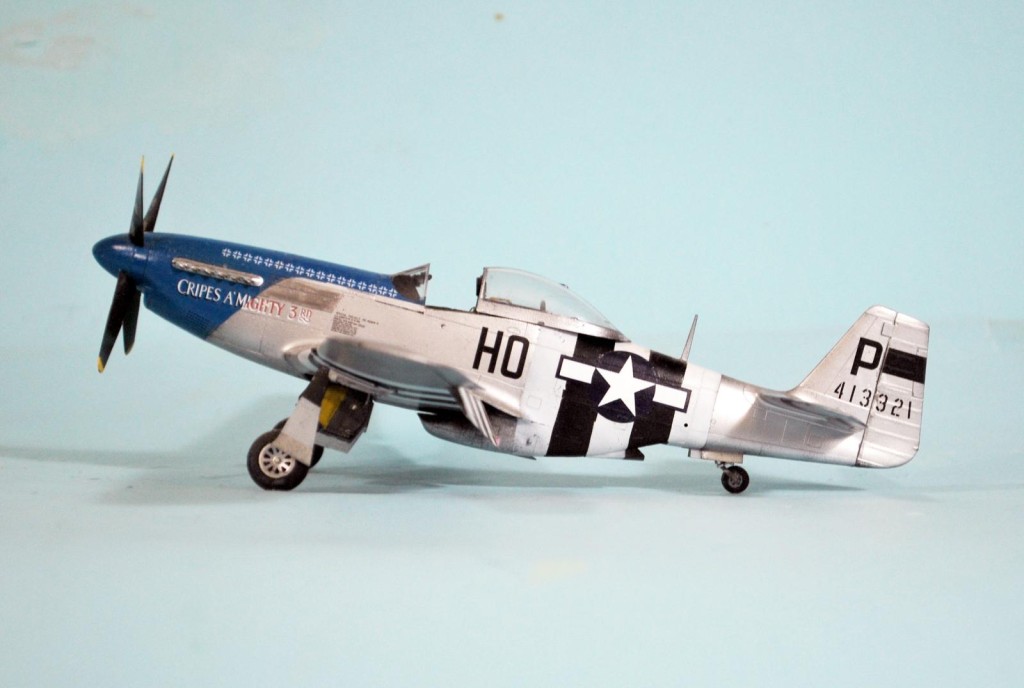











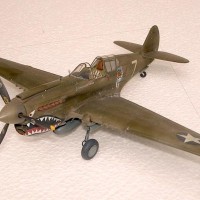
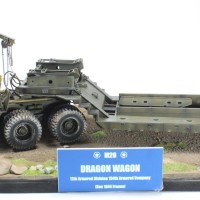
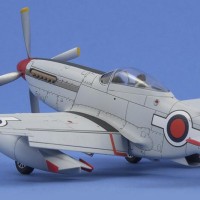
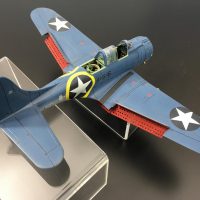
Another great, Mustang, Tom. I’m probably going to do that plane with the Airfix kit.
That'll look good - the Airfix kit is #2 behind Eduard's.
Nicely done Mr. C
Excellent work on this famous Pony, Tom @tcinla
Did the Airfix kit which was already a pleasure to build, but your conclusion about this kit makes me want to build another P51.
Thanks for the great supporting article.
Amazing build and supporting article, Tom!
All as usual.
Fantastic result! I like blue nose P-51!
Another beaut', Tom!
Well done, Tom (@tcinla). P-51s are always cool. I have never tried hand-brushing Vallejo metals, so now I have one more trick in the bag to try on a model. Cheers.
Nice work plane and History Tom. Is there a 1/72 scale P-51 you recommend?
Too late to build a 1/48 collection up.
Airfix by 20 miles. Dropped flaps, nice cockpit, open canopy, correct wheel well.
Another good-lookin' build Tom!
Nice job, once again! On a side note, I went to High School in New Orleans with the daughter of "Whispering" John D. Landers. Also, on another forum, an IPMS judge/rivet counter stated that the Mustangs that went to the Pacific, Iwo in particular, did not have "puttied" wings. That was the first time I ever heard of that bit of trivia. I thought they all came from the factory that way. Any input from your vast knowledge of the subject?
Another International Poop and Moan Society "hex'spurt" bites the dust. They ALL came out of the factory with the puttied wings.
Thanks, Tom. That's what I thought. These IPMS judges always say "show mw a photo"...that sword cuts both ways.
That's a nice looking stang Tom !
A great looking Blue Nose Mustang, Tom. Really like the D-Day stripes.
Nice looking Mustang, great job!
Excellent build
A beauty!
Bootiful! Takes me back to the Airfix 1/24 Kit when I was a kid!
Another fine Mustang Tom.
What a nice model. I'll get around to building one eventually, but first I have to grind through my collection of Monogram and hawk Mustangs.